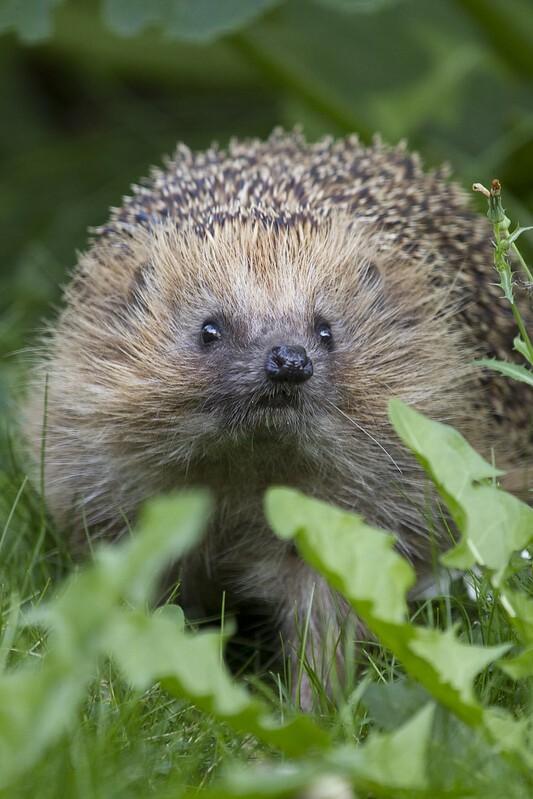Editors's note: This story was updated on Jan 11 with comments from study author Jesper Larsen, DVM, PhD.
A new study led by researchers in Denmark and the United Kingdom has identified hedgehogs as a reservoir of a well-known antibiotic-resistant pathogen.
The study, published last week in Nature, suggests that a strain of methicillin-resistant Staphylococcus aureus (MRSA) that has become one of the predominant livestock-associated MRSA lineages in Europe likely originated in hedgehogs. Furthermore, the particular strain of MRSA appears to predate, by more than 100 years, the advent of the antibiotic era.
The authors of the study say the findings are inconsistent with the view that widespread antibiotic resistance in bacterial pathogens is solely driven by antibiotic use in human and veterinary medicine, and highlights the importance of a One Health perspective on antimicrobial resistance.
Distribution of MRSA in hedgehogs
Based on previous surveys in Denmark and Sweden that found a surprisingly high prevalence of MRSA carrying the mecC gene (mecC-MRSA) in hedgehogs, the research team, led by scientists from the University of Cambridge and Denmark's Statens Serum Institut, began their investigation by analyzing 828 hedgehog samples from 10 European countries and New Zealand, where European hedgehogs were introduced in the late 1800s.
They wanted to get a better understanding of the geographic range of mecC-MRSA in hedgehogs.
mecC is one the two genes, along with mecA, that mediate methicillin resistance in S aureus, a bacterial pathogen that's found on the skin of humans and animals and is a common cause of skin and other types of infections. First discovered in dairy cows in 2011, mecC-MRSA has also been found in humans and other domesticated animals.
Their analysis found that the prevalence of mecC-MRSA was not only high in hedgehogs in Denmark (50%), but also in the United Kingdom (66%), the Czech Republic (50%), and Portugal (29%). Whole-genome sequencing of the samples showed that the 222 mecC-MRSA isolates found in the hedgehog samples belonged to six MRSA clonal complexes (CCs), three of which (CC130, CC425, and CC1943) are the most successful mecC-MRSA clones in Europe.
The researchers then further analyzed the sequenced mecC-MRSA isolates from the hedgehogs, along with 913 sequenced mecC-MRSA isolates from other sources (human, cattle, sheep, goats, and other wild animals) that belonged to the same clones, to build an evolutionary history. That revealed that isolates from CC1943, including the hedgehog isolates, could be divided into lineages dating back to the early to late 1800s—long before the introduction of penicillin in 1942 and methicillin in 1959.
Further investigation of population dynamics led the researchers to theorize that hedgehogs may have been primary hosts of mecC-MRSA starting in Denmark, and that the strain subsequently spread to dairy cows, other domesticated animals, and people.
"Our findings strongly suggest that most mecC-MRSA lineages originate from hedgehogs, although dairy cows and other domesticated animals probably act as intermediate hosts and vectors in zoonotic transmission from hedgehogs to humans," the study authors wrote.
Co-evolutionary adaptation
But how could MRSA, which was first identified in humans in 1960 and has long been understood to have evolved because of widespread use of penicillin and methicillin in human and animal medicine, have arisen in hedgehogs? The likely culprit, according to the study, is the dermatophyte Trichophyton erinacei, a fungal parasite commonly found on the skin of hedgehogs in New Zealand and northwestern Europe.
An old study from the 1960s that the researchers came across suggested T erinacei is able to produce a penicillin-like antibiotic that is similar to methicillin. When they screened T erinacei against S aureus in the lab, they found that the parasite naturally produces two penicillin-like antibiotics that they believe could have provided the selective pressure for S aureus bacteria on hedgehog skin, as a defense mechanism against the parasite, to develop resistance.
"This suggests that penicillin-producing T. erinacei isolates were circulating in European hedgehogs long before they were introduced into New Zealand in the late 1800s and that methicillin resistance first emerged in Europe as a co-evolutionary adaptation of S. aureus to colonization of hedgehogs," the authors wrote.
Lead study author Jesper Larsen, DVM, PhD, a senior researcher at Statens Serum Insitut, says that while overuse of antibiotics in human and veterinary medicine is the most important driver of antibiotic resistance, the findings suggest that the emergence of clinically-relevant resistance in pathogenic bacteria is driven by many factors.
"Bacteria that causes infections in humans and livestock acquire resistance genes from other bacteria and our study suggests that these genes might evolve in wild animals as a result of a co-evolutionary battle—or arms race—between bacteria and antibiotic-producing microorganisms," Larsen told CIDRAP News in an email. "It is therefore important take a broad One Health perspective on antibiotic resistance."
Larsen say future research should aim to identify these "natural battlegrounds" where bacteria develop resistance to avoid getting getting killed by antibiotic-producing microorganisms, and to understand how that contributes to the emergence of resistance in clinically relevant bacteria.
Larsen and his collegaues also note that, since people rarely get mecC-MRSA infections, hedgehogs are not to be feared. But people feeding them or handling them should always maintain good hand hygiene.
























